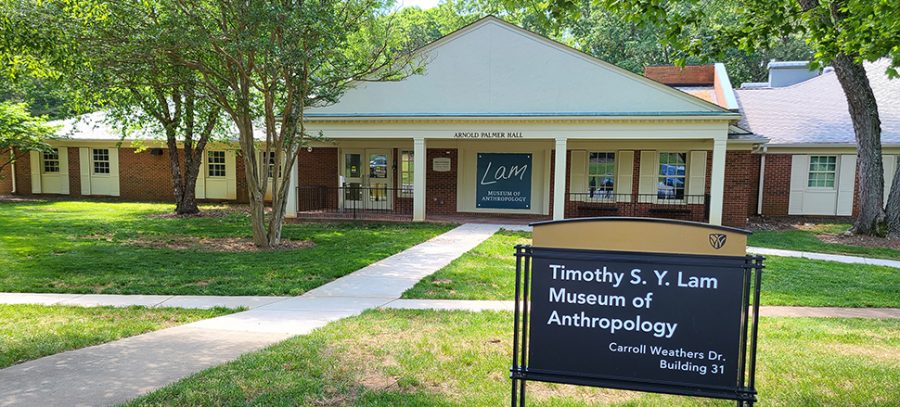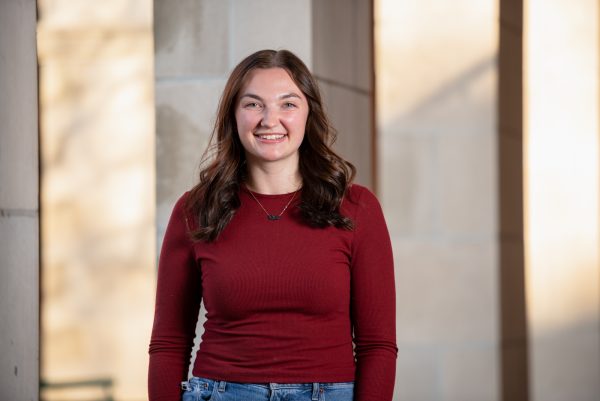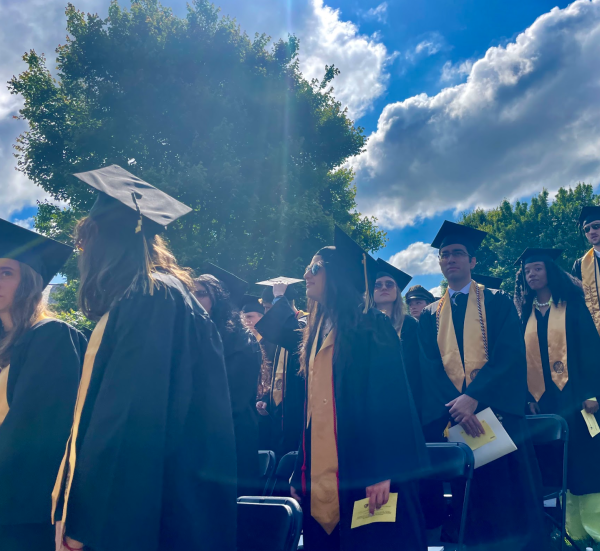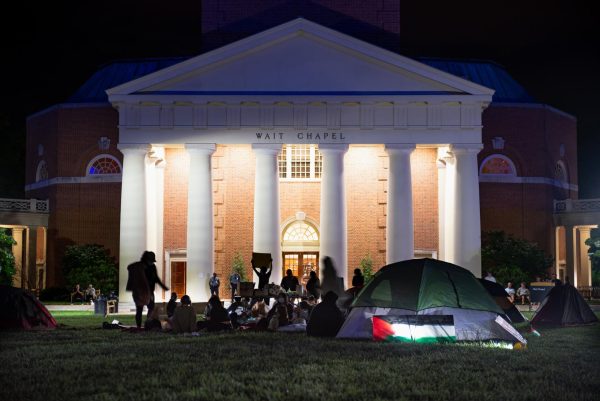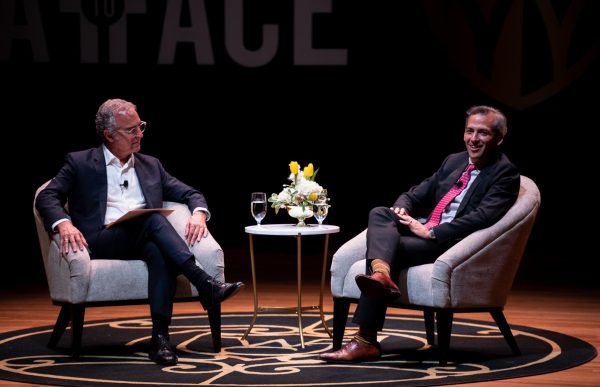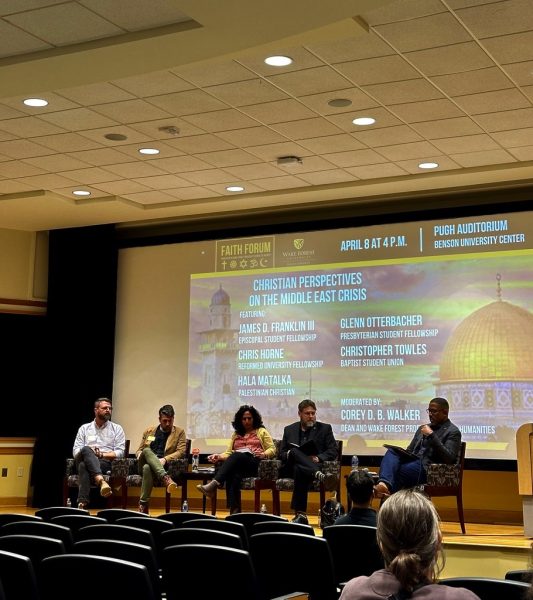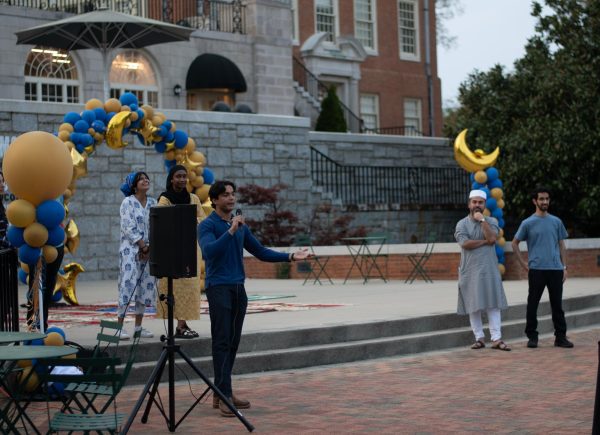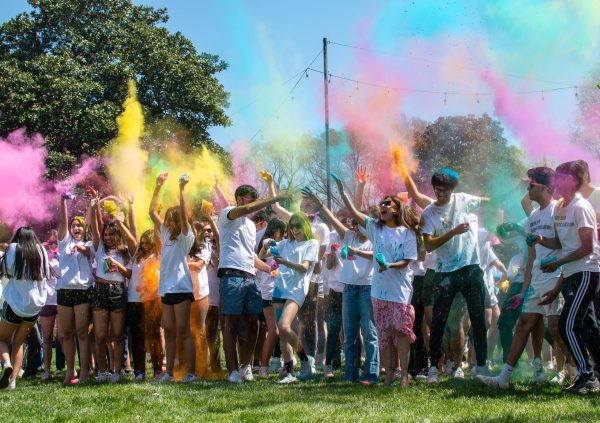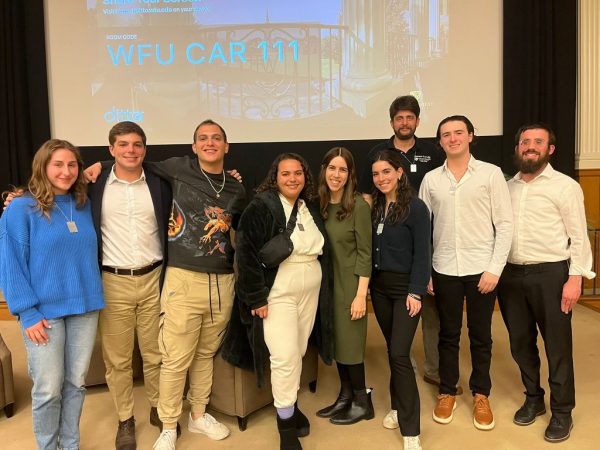Lam museum displays student-curated exhibit
The anthropology museum celebrated the exhibit with a lecture on the endurance of Latin American culture
February 17, 2022
The Timothy S.Y. Lam Museum of Anthropology held a lecture on Feb. 7, entitled “The Endurance of Latin America Through Colonialism”, by Dr. Scotti Norman. The event celebrated the opening of a new student-curated exhibit titled “Experiences of Colonialism in Latin America”.
“Experiences of Colonialism in Latin America” was spearheaded by Dr. Carla Hernandez. During her time at Wake Forest as a visiting professor, Hernandez oversaw students as they compiled a variety of Latin American artifacts that represented the effects of colonialism on different cultures and groups. To present the exhibit, Norman, who is a personal friend of Hernandez, was asked to share her related research and connect it to the students’ curations.
Norman is a visiting professor at Wake Forest University who specializes in Latin American studies, specifically the religious traditions of Andean societies. Her current fieldwork focuses on a 16th-century religious practice called Taki Onqoy, a resistance movement of Andean nations against Catholicism and the influences of Spanish colonizers. Meaning “singing or dancing sickness” in the Quechua language, communities participated in fasting, chanting and intricate dancing that lasted multiple days — all in an effort to solidify their identity as indigenous peoples and to promote their non-cooperation with European colonizers.
Norman’s expertise on this native tradition taught the lecture’s audience how Latin American cultures have been forced to adapt due to European impact. In her talk, she also explored the diversity of Latin American cultures prior to colonization, highlighting preservation of Latin American traditions through a presentation of the artifacts displayed in the exhibit. These artifacts included figures that reflected Latin American religion as well as pottery that blended both European and Latin American design. Norman emphasized that these artifacts related to the theme of the perseverance of tradition.
Norman aimed to combat the long-standing discrepancies in the general public’s understanding of these communities by focusing on the history of multiple Latin and South American civilizations and their cultures.
“It is important to consider this long-term history of Latin American civilizations because the way history is taught in schools often only begins with Aztecs and Inca and ignores the centuries of brilliant communities that preceded them,” Norman said.
Throughout the presentation, Norman referenced significant events in Latin American history, such as the Spanish-Aztec and Spanish-Incan wars. Through these two historical events, Norman explored popular myths and beliefs regarding Spanish colonization.
“I wanted to emphasize that the process of conquest in Central and South America was not inevitable due to any superiority in European culture,” Norman said.
As the presentation continued, Norman connected her fieldwork to the themes of the exhibit. She frequently referenced specific artifacts from the collection to demonstrate the rejection of Spanish Catholicism by native peoples along with the merging of European and Latin ideas.
Other objects, such as the Veracruz smiling figures, introduced the concept of gender in Latin American religious traditions, a theme at the forefront of Norman’s work. When asked about the importance of this specific facet of her research, Norman launched into a description of inequality regarding gender in historical studies.
“My current research integrates gender and inequality into colonialism studies,” Norman said. “Specifically, I’m looking at how women helped shape and lead Taki Onqoy, pushing back against the narrative that women were fully disenfranchised by Spanish colonialism. My work explores the earliest parts of colonialism, so we can see the roots of systemic inequality through the material culture.”
Norman concluded the event with a brief case study on the endurance of indigenous rituals. She examined Taki Onqoy, which was prohibited by the Spanish due to a lack of understanding of the tradition.
After the practice was banned, groups began to practice Taki Onqoy in secret, which Norman compared to the secrecy of an American speakeasy during the prohibition era. Despite the efforts of the Spanish to end the ritual, Taki Onqoy endured. Her focus on this tradition and its persistence in Latin American cultures during the period of colonialism furthered the exhibit’s aim of emphasizing ritual endurance in Latin American culture.
When asked about the importance of the exhibit, Hernandez emphasized the students’ goal to educate a broad audience on the effects of colonialism.
“The students [who curated the exhibit] wanted the exhibit to reflect the impact of colonialism over time within Latin America as documented through material cultures,” Hernandez said. “They highlighted the understanding of what colonialism is for a broader audience, from children to adults who may not have much knowledge of archeology, the legacies of colonialism and the importance of material culture in revealing important changes within a society.”
“Experiences of Colonialism in Latin America” will be open until July 23. The Lam Museum will hold its next event on Feb. 26, 2022. More information can be found on the museum’s website: lammuseum.wfu.edu.


